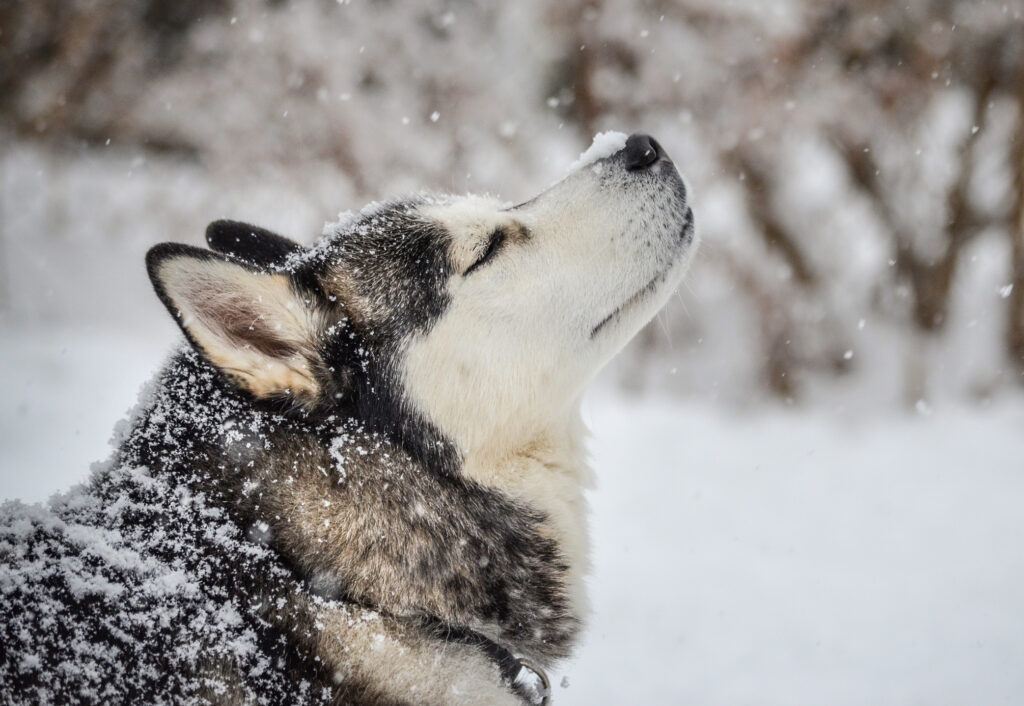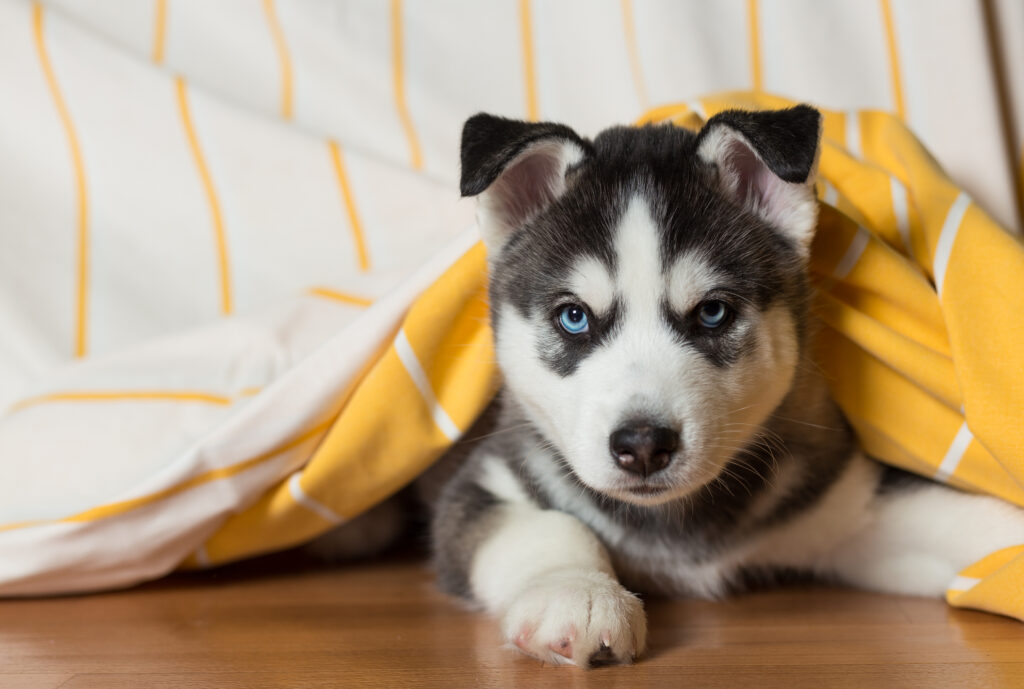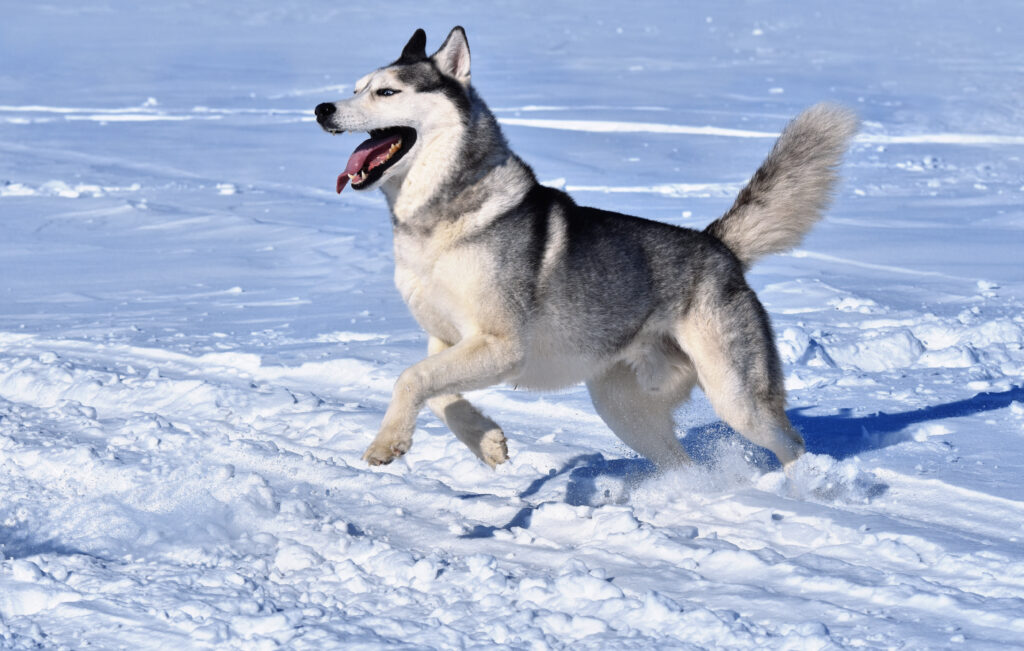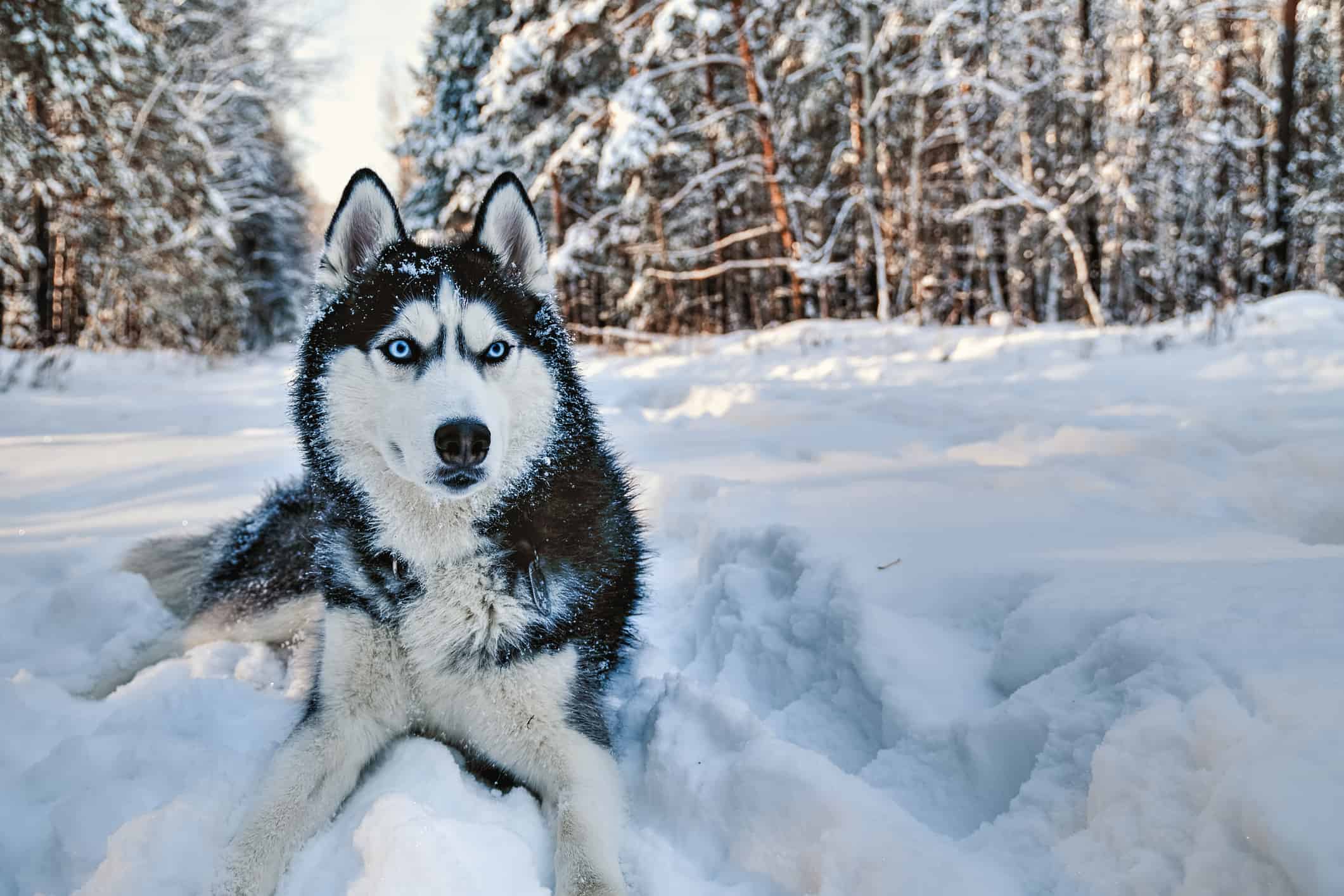With their distinctive eyes and boundless energy, Siberian Huskies are one of the most popular dog breeds in the world – ranking fifth in our 2022 analysis.
In this edition of About The Breed, we’ll discover the roots of the Siberian Husky, look at the personality of the breed, and answer commonly asked questions.
Siberian Husky breed characteristics
- A medium-sized dog, male Huskies weigh between 45 and 60 pounds whilst females are between 35 and 50 pounds.
- While a male Siberian Husky can stand at 21 to 24 inches tall, females are slightly shorter, reaching from 20 to 22 inches.
- The Siberian Husky has one of the thickest double coats of all dog breeds, which helps them to withstand even the harshest arctic conditions. A Siberian Husky will survive even in temperatures well below -70°F. The double coat also reflects heat in the summer.
- Huskies are very vocal dogs. However, they tend to howl, whine, and chirp rather than bark.
- The breed is very friendly, and a properly socialized Siberian Husky will greet any stranger or other dogs naturally.
- The eyes of a Siberian Husky are generally blue, brown, or black, but each eye may also have a different color. The bicolor eye (heterochromia) does not affect the vision of the breed.

A short history of the Siberian Husky
As the name of the breed suggests, the Siberian Husky originated in the Siberian Arctic. The breed was originally bred to work as a sled-pulling dog while relying on very little food to survive.
The Siberian Husky was bred by the Chukchi people of eastern Siberia. The Chukchi people were able to get a lot of use out of the Siberian Husky, and their main work included pulling sleds over long distances to carry goods such as hunted animals. Aside from that, Siberian Huskies were invited to live among people. They provided warmth, especially to children, by sleeping with the Chukchi people.
Although the Siberian Husky is one of the oldest dog breeds, not much is known about them before coming to Nome, Alaska in 1908. The first Siberian Huskies to be brought to the United States were for sled dog racing. The first sled dog race won by Siberian Huskies came shortly after in the 1910 All-Alaska Sweepstakes, a 408-mile distance race from Nome to Candle and back. The Siberian Huskies dominated races from 1909 to the 1920s.
The Siberian Huskies imported from the Anadyr River and surrounding areas in eastern Siberia worked as sled dogs and became renowned in Alaska. In 1925, a diphtheria epidemic that was life-threatening to children was discovered by local doctors. The only serum that could stop the epidemic was in Anchorage, which was over 600 miles away from Nome. The only plane that could deliver the medicine wasn’t functioning, and after considering the alternatives, officials decided to deliver the medicine with multiple dog sled teams.
The most notable sled dog that was part of the mission was a Siberian Husky. The name of the dog was Balto, a lead sled dog who was mushed by Gunnar Kaasen. Balto led a team of sled dogs on the final leg of the 1925 serum run (Great Race of Mercy). Even though Balto and Kaasen were among 20 mushers and 150 sled dogs, they were the first to arrive at Nome and successfully delivered the serum. After this, Balto and Kaasen became well-known and news coverage of the mission spread worldwide. A critically acclaimed 2019 film, Togo, was based on their mission.

Modern utilization of the Siberian Husky
Siberian Huskies are still working as sled dogs today – this is what they were bred for, after all. Since a Siberian Husky is so adept as a sled dog, Huskies are a preferred breed for sled dog races, and if you have ever watched a sled dog race, it’s pretty uncommon not to see a Husky. The most notable sled dog race, the Iditarod trail race in Alaska, is participated by hundreds of Siberian Huskies each year.
The Siberian Husky is very independent and stubborn when it comes to training. Because of their independent nature, it is hard to utilize them as service dogs.
Because it can be hard to train a Husky, early training is very important. They are pack dogs with a hierarchical order and oftentimes will challenge authority when trained. This is more common in male Huskies than females.
A Siberian Husky will definitely prefer snowy conditions, but they can actually adapt to any climate. In climates where snow is rarely or never seen, it is important to provide plenty of exercise to keep them busy and active. Exercises such as running, bikejoring and hiking are great, but because of their thick double coat, doing these exercises in early morning or after the sun sets in summer while providing plenty of water is going to mitigate any risk of overheating.
Despite their wolf-like appearance, they are considered one of the friendliest dog breeds. A Siberian Husky is typically gentle and comfortable with people – even with strangers. This makes them a good choice for a family pet – as long as you are able to dedicate sufficient time to socialization, physical exercise and mental stimulation.

Commonly Asked Siberian Husky Questions
How long does a Siberian Husky live?
Siberian Huskies live between 12 and 14 years. Unfortunately, the usual cause of death is cancer. One of the most common health problems seen in the breed are eye problems such as progressive retinal atrophy, cataracts, corneal dystrophy which can reduce the quality of life and life expectancy.
What do Siberian Huskies eat?
While feeding a Siberian Husky with commercial dry or wet food is easy and cost-effective, you can feed your Husky with more nutritional options like raw chicken, beef, fish, and some fruits. It’s best to be careful with fruits because some may contain chemicals that could be life-threatening (refer to our guide for what your dog can and cannot eat)
How fast can a Siberian Husky run?
The Siberian Husky is a very energetic and considerably fast breed. They can reach top speeds of up to 30 miles per hour, and they also have amazing stamina. A Siberian Husky can run up to 150 miles a day with an average speed of 9 to 10 miles per hour.
How big does a Siberian Husky get?
The Siberian Husky is a medium-sized breed. At full-size, the male Siberian Huskies are generally between 21 and 24 inches tall and 45 and 60 pounds while females are 35 to 50 pounds and can stand between 20 and 22 inches.
How much exercise does a Siberian Husky need?
Huskies are very active and energetic dogs. They will need approximately two hours of exercise a day. Without proper exercise, they can develop some serious health issues and behavioral problems.
What is the difference between an Alaskan Husky and a Siberian Husky?
The Alaskan Husky and the Siberian Husky are very similar breeds. While Siberian Huskies are purebred dogs, the Alaskan Husky is a mix of Siberian Husky, German Shepherd, Border Collie, and more.
Read more in this series:


You must be logged in to post a comment.